Origin: (Robert Langdon Book 5) Read online
Page 43
England believed that there was a twist, however, which related to how the universe spread energy.
“We know the universe promotes entropy and disorder,” England said, “so we may be surprised to see so many examples of molecules organizing themselves.”
On the screen, several images that had appeared earlier now returned—a tornado vortex, a rippled riverbed, a snowflake.
“All of these,” England said, “are examples of ‘dissipative structures’—collections of molecules that have arranged themselves in structures that help a system disperse its energy more efficiently.”
England quickly illustrated how tornadoes were nature’s way of dispelling a concentrated area of high pressure by converting it into a rotational force that eventually exhausted itself. The same held true for rippled riverbeds, which intercepted the energy of fast-moving currents and dissipated it. Snowflakes dispersed the sun’s energy by forming multifaceted structures that reflected light chaotically outward in all directions.
“Simply stated,” England continued, “matter self-organizes in an effort to better disperse energy.” He smiled. “Nature—in an effort to promote disorder—creates little pockets of order. These pockets are structures that escalate the chaos of a system, and they thereby increase entropy.”
Langdon had never thought of it until now, but England was right; the examples were everywhere. Langdon pictured a thundercloud. When the cloud became organized by a static electric charge, the universe created a bolt of lightning. In other words, the laws of physics created mechanisms to disperse energy. The lightning bolt dissipated the cloud’s energy into the earth, spreading it out, thereby increasing the overall entropy of the system.
To efficiently create chaos, Langdon realized, requires some order.
Langdon wondered absently if nuclear bombs might be considered entropic tools—small pockets of carefully organized matter that served to create chaos. He flashed on the mathematical symbol for entropy and realized that it looked like an explosion or the Big Bang—an energetic dispersion in all directions.
“So where does this leave us?” England said. “What does entropy have to do with the origins of life?” He walked over to his chalkboard. “As it turns out, life is an exceptionally effective tool for dissipating energy.”
England drew an image of the sun radiating energy down onto a tree.
“A tree, for example, absorbs the intense energy of the sun, uses it to grow, and then emits infrared light—a much less focused form of energy. Photosynthesis is a very effective entropy machine. The concentrated energy of the sun is dissolved and weakened by the tree, resulting in an overall increase in the entropy of the universe. The same can be said for all living organisms—including humans—which consume organized matter as food, convert it to energy, and then dissipate energy back into the universe as heat. In general terms,” England concluded, “I believe life not only obeys the laws of physics, but that life began because of those laws.”
Langdon felt a thrill as he pondered the logic, which seemed quite straightforward: If blazing sunlight hit a patch of fertile dirt, the physical laws of the earth would create a plant to help dissipate that energy. If deep-ocean sulfur vents created areas of boiling water, life would materialize in those locations and disseminate the energy.
“It is my hope,” England added, “that one day we’ll find a way to prove that life indeed spontaneously emerged from lifeless matter … a result of nothing more than the laws of physics.”
Fascinating, Langdon mused. A clear scientific theory of how life might have self-generated … without the hand of God.
“I am a religious person,” England said, “and yet my faith, like my science, has always been a work in progress. I consider this theory agnostic on questions of spirituality. I am simply trying to describe the way things ‘are’ in the universe; I will leave the spiritual implications to the clerics and philosophers.”
Wise young man, Langdon thought. If ever his theory could be proven, it would have a bombshell effect on the world.
“For the moment,” England said, “everyone can relax. For obvious reasons, this is an extremely difficult theory to prove. My team and I have a few ideas for modeling dissipation-driven systems in the future, but at the moment, we’re still years away.”
England’s image faded, and Edmond reappeared on the screen, standing beside his quantum computer. “I, however, am not years away. This type of modeling is precisely what I’ve been working on.”
He walked toward his workstation. “If Professor England’s theory is correct, then the entire operating system of the cosmos could be summed up by a single overriding command: spread energy!”
Edmond sat down at his desk and began typing furiously on his oversized keyboard. The displays before him filled with alien-looking computer code. “I took several weeks and reprogrammed the entire experiment that had previously failed. I embedded into the system a fundamental goal—a raison d’être; I told the system to dissipate energy at all costs. I urged the computer to be as creative as it could possibly be in its quest to increase entropy in the primordial soup. And I gave it permission to build whatever tools it thought it might need to accomplish that.”
Edmond stopped typing and spun around in his chair, facing his audience. “Then I ran the model, and something incredible happened. It turned out that I had successfully identified the ‘missing ingredient’ in my virtual primordial soup.”
Langdon and Ambra both stared intently at the display wall as the animated graphic of Edmond’s computer model began to play. Again, the visual plunged deep into the churning primordial soup, magnifying down to the subatomic realm, seeing the chemicals bouncing around, binding and rebinding with one another.
“As I fast-forwarded the process and simulated the passage of hundreds of years,” Edmond said, “I saw Miller-Urey’s amino acids taking shape.”
Langdon was not knowledgeable about chemistry, but he certainly recognized the on-screen image as a basic protein chain. As the process continued, he watched as increasingly complex molecules took shape, bonding into a kind of honeycombed chain of hexagons.
“Nucleotides!” Edmond shouted as the hexagons continued to fuse. “We’re watching the passage of thousands of years! And speeding ahead, we see the first faint hints of structure!”
As he spoke, one of the nucleotide chains began wrapping around itself and curling into a spiral. “See that?!” Edmond shouted. “Millions of years have passed, and the system is trying to build a structure! The system is trying to build a structure to dissipate its energy, just like England predicted!”
As the model progressed, Langdon was stunned to see the little spiral become a twin spiral, expanding its structure into the famous double-helix shape of the most famous chemical compound on earth.
“My God, Robert …,” Ambra whispered, wide-eyed. “Is that …”
“DNA,” Edmond announced, freezing the model midframe. “There it is. DNA—the basis for all life. The living code of biology. And why, you ask, would a system build DNA in an effort to dissipate energy? Well, because many hands make light work! A forest of trees diffuses more sunlight than a single tree. If you’re an entropy tool, the easiest way to do more work is to make copies of yourself.”
Edmond’s face appeared on-screen now. “As I ran this model forward, from this point on, I witnessed something absolutely magical … Darwinian evolution took off!”
He paused for several seconds. “And why wouldn’t it?” he continued. “Evolution is the way the universe continually tests and refines its tools. The most efficient tools survive and replicate themselves, improving constantly, becoming more and more complex and efficient. Eventually, some tools look like trees, and some look like, well … us.”
Edmond now appeared floating in the darkness of space with the blue orb of earth hovering behind him. “Where do we come from?” he asked. “The truth is—we come from nowhere … and from everywhere. We come from the same laws o
f physics that create life across the cosmos. We are not special. We exist with or without God. We are the inevitable result of entropy. Life is not the point of the universe. Life is simply what the universe creates and reproduces in order to dissipate energy.”
Langdon felt strangely uncertain, wondering if he had fully processed the implications of what Edmond was saying. Admittedly, this simulation would result in a massive paradigm shift and would certainly cause upheavals across many academic disciplines. But when it came to religion, he wondered whether Edmond would change people’s views. For centuries, most of the devout had looked past vast amounts of scientific data and rational logic in defense of their faith.
Ambra seemed to be struggling with her own reactions, her expression somewhere between wide-eyed wonder and guarded indecision.
“Friends,” Edmond said, “if you’ve followed what I’ve just shown you, then you understand its profound significance. And if you’re still uncertain, stay with me, because it turns out that this discovery has led to yet another revelation, one that is even more significant.”
He paused.
“Where we come from … is not nearly as startling as where we are going.”
CHAPTER 94
THE SOUND OF running footsteps echoed through the subterranean basilica as a Guardia agent sprinted toward the three men gathered in the deepest recesses of the church.
“Your Majesty,” he called out, breathless. “Edmond Kirsch … the video … is being broadcast.”
The king turned in his wheelchair, and Prince Julián spun around as well.
Valdespino gave a disheartened sigh. It was only a matter of time, he reminded himself. Still, his soul felt heavy to know that the world was now seeing the same video that he had seen in the Montserrat library with al-Fadl and Köves.
Where do we come from? Kirsch’s claim of a “Godless origin” was both arrogant and blasphemous; it would have a ruinous effect on the human desire to aspire to a higher ideal and emulate the God who created us in His image.
Tragically, Kirsch had not stopped there. He had followed up this first desecration with a second, far more dangerous one—proposing a profoundly disturbing answer to the question Where are we going?
Kirsch’s prediction for the future was calamitous … so disturbing that Valdespino and his colleagues had urged Kirsch not to release it. Even if the futurist’s data were accurate, sharing it with the world would cause irreversible damage.
Not just for the faithful, Valdespino knew, but for every human being on earth.
CHAPTER 95
NO GOD REQUIRED, Langdon thought, replaying what Edmond had said. Life arose spontaneously from the laws of physics.
The notion of spontaneous generation had long been debated—theoretically—by some of science’s greatest minds, and yet tonight Edmond Kirsch had presented a starkly persuasive argument that spontaneous generation had actually happened.
Nobody has ever come close to demonstrating it … or even explaining how it might have occurred.
On-screen, Edmond’s simulation of the primordial soup was now teeming with tiny virtual life-forms.
“Observing my budding model,” Edmond narrated, “I wondered what would happen if I let it run? Would it eventually explode out of its flask and produce the entire animal kingdom, including the human species? And what if I let it run beyond that? If I waited long enough, would it produce the next step in human evolution and tell us where we are going?”
Edmond appeared again beside E-Wave. “Sadly, not even this computer can handle a model of that magnitude, so I had to find a way to narrow the simulation. And I ended up borrowing a technique from an unlikely source … none other than Walt Disney.”
The screen now cut to a primitive, two-dimensional, black-and-white cartoon. Langdon recognized it as the 1928 Disney classic Steamboat Willie.
“The art form of ‘cartooning’ has advanced rapidly over the past ninety years—from rudimentary Mickey Mouse flip-books to the richly animated films of today.”
Beside the old cartoon appeared a vibrant, hyperrealistic scene from a recent animated feature.
“This leap in quality is akin to the three-thousand-year evolution from cave drawings to Michelangelo’s masterpieces. As a futurist, I am fascinated by any skill that makes rapid advances,” Edmond continued. “The technique that makes this leap possible, I learned, is called ‘tweening.’ It’s a computer animation shortcut in which an artist asks a computer to generate the intermediate frames between two key images, morphing the first image smoothly into the second image, essentially filling in the gaps. Rather than having to draw every single frame by hand—which can be likened here to modeling every tiny step in the evolutionary process—artists nowadays can draw a few of the key frames … and then ask the computer to take its best guess at the intermediary steps and fill in the rest of the evolution.
“That’s tweening,” Edmond declared. “It’s an obvious application of computing power, but when I heard about it, I had a revelation and I realized it was the key to unlocking our future.”
Ambra turned to Langdon with a questioning look. “Where is this going?”
Before Langdon could consider it, a new image had appeared on-screen.
“Human evolution,” Edmond said. “This image is a ‘flip movie’ of sorts. Thanks to science, we have constructed several key frames—chimpanzees, Australopithecus, Homo habilis, Homo erectus, Neanderthal man—and yet the transitions between these species remain murky.”
Precisely as Langdon had anticipated, Edmond outlined an idea to use computer “tweening” to fill in the gaps in human evolution. He described how various international genome projects—human, Paleo-Eskimo, Neanderthal, chimpanzee—had used bone fragments to map the complete genetic structure of nearly a dozen intermediary steps between chimpanzee and Homo sapiens.
“I knew if I used these existing primitive genomes as key frames,” Edmond said, “I could program E-Wave to build an evolutionary model that linked all of them together—a kind of evolutionary connect-the-dots. And so I began with a simple trait—brain size—a very accurate general indicator of intellectual evolution.”
A graphic materialized on-screen.
“In addition to mapping general structural parameters like brain size, E-Wave mapped thousands of subtler genetic markers that influence cognitive abilities—markers like spatial recognition, range of vocabulary, long-term memory, and processing speed.”
The display now flashed a rapid succession of similar graphs, all showing the same exponential increase.
“Then E-Wave assembled an unprecedented simulation of intellectual evolution over time.” Edmond’s face reappeared. “‘So what?’ you ask. ‘Why do we care about identifying the process by which humans became intellectually dominant?’ We care because if we can establish a pattern, a computer can tell us where that pattern will lead in the future.” He smiled. “If I say two, four, six, eight … you reply ten. I have essentially asked E-Wave to predict what ‘ten’ will look like. Once E-Wave has simulated intellectual evolution, I can ask the obvious question: What comes next? What will human intellect look like five hundred years from now? In other words: Where are we going?”
Langdon found himself spellbound by the prospect, and while he didn’t know enough about genetics or computer modeling to assess the accuracy of Edmond’s predictions, the concept was ingenious.
“The evolution of a species,” Edmond said, “is always linked to that organism’s environment, and so I asked E-Wave to overlay a second model—an environmental simulation of today’s world—easy to do when all of our news about culture, politics, science, weather, and technology is broadcast online. I asked the computer to pay special attention to those factors that would most affect the future development of the human brain—emergent drugs, new health technologies, pollution, cultural factors, and so on.” Edmond paused. “And then,” he declared, “I ran the program.”
The futurist’s entire face now filled
the screen. He stared directly into the camera. “When I ran the model … something very unexpected happened.” He glanced away, almost perceptibly, and then back to the camera. “Something deeply upsetting.”
Langdon heard Ambra draw a startled breath.
“So I ran it again,” Edmond said, frowning. “Unfortunately, the same thing happened.”
Langdon sensed true fear in Edmond’s eyes.
“So I reworked the parameters,” he said. “I retooled the program, altering every variable, and I ran it again and again. But I kept getting the same result.”
Langdon wondered if maybe Edmond had discovered that human intellect, after aeons of progress, was now on the decline. There were certainly alarming indicators to suggest this might be true.
“I was distressed by the data,” Edmond said, “and couldn’t make sense of it. So I asked the computer for an analysis. E-Wave conveyed its evaluation in the clearest way it knew how. It drew me a picture.”
The screen refreshed to show a graphic timeline of animal evolution beginning some one hundred million years ago. It was a complex and colorful tapestry of horizontal bubbles that expanded and contracted over time, depicting how species appeared and disappeared. The left side of the graph was dominated by the dinosaurs—already at the height of their development at that point in history—who were represented by the thickest of all the bubbles, which grew thicker through time before abruptly collapsing some sixty-five million years ago with the mass dinosaur extinction.
“This is a timeline of dominant life-forms on earth,” Edmond said, “presented in terms of species population, food-chain position, interspecific supremacy, and overall influence on the planet. Essentially, it is a visual representation of who’s running the show on earth at any given time.”
Langdon’s eye traced along the diagram as different bubbles expanded and contracted, indicating how various large populations of species had appeared, proliferated, and disappeared from existence.

 Angels & Demons
Angels & Demons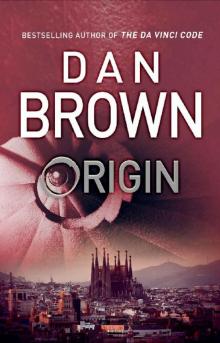 Origin
Origin The Da Vinci Code
The Da Vinci Code Inferno
Inferno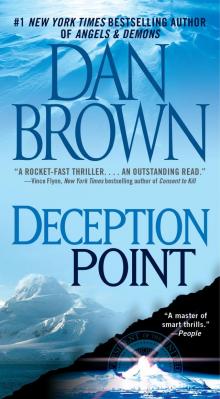 Deception Point
Deception Point Digital Fortress
Digital Fortress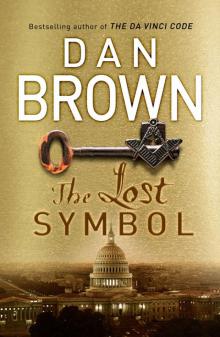 The Lost Symbol
The Lost Symbol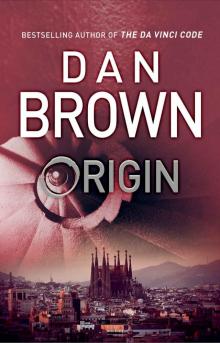 Origin: (Robert Langdon Book 5)
Origin: (Robert Langdon Book 5) Angles & Demons
Angles & Demons Inferno: A Novel
Inferno: A Novel Angels & Demons rl-1
Angels & Demons rl-1 The Great Expectations School
The Great Expectations School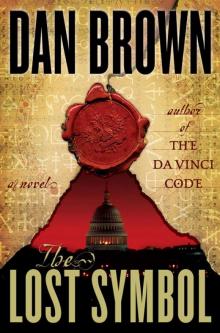 The Lost Symbol rl-3
The Lost Symbol rl-3 Angels and Demons
Angels and Demons Inferno: Special Illustrated Edition: Featuring Robert Langdon
Inferno: Special Illustrated Edition: Featuring Robert Langdon